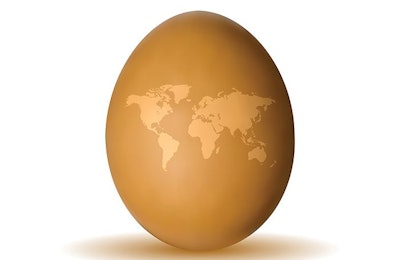
Three flights and 32.5 hours after my car pulled away from my home, I checked into a hotel in Bangkok at 1 a.m. local time. Bleary-eyed and tired, I couldn’t help wondering if it was worth traveling halfway around the world to learn more about poultry production in Asia.
My reservations about the trip quickly evaporated during a presentation by Vincent Guyonnet at the Poultry Trends conference presented by WATT Global Media at VIV Asia. Between 1997 and 2017, world egg production increased from 46.5 to 80.1 million metric tons, an increase of 72 percent. During the same two-decade period, egg production in Asia increased by 94 percent. Even with this increased egg production, Asia is still a net importer of eggs and egg products.
According to Guyonnet’s estimates, Asia will continue to be the primary driver of growth in the world’s egg production over the next two decades. He forecast that, in 2037, Asia will account for 70 percent of the 138.6 million metric tons of eggs that the world will produce. His estimate is based on the expected continued growth in the human population and per capita income in Asia. In 2017, per capita egg consumption in Asia was 184; the average for the rest of the world, excluding Africa, was 204.
Guyonnet, a consultant, sees room for growth in per capita consumption of eggs in Asia. Japan, Malaysia and China all have per capita egg consumption levels of more than 300, but India, Bangladesh, Indonesia and Pakistan, which collectively are home to nearly 2 billion people, have per capita egg consumption levels of 100 or less.
Asia is now and will continue to be where the action is for egg production.


















